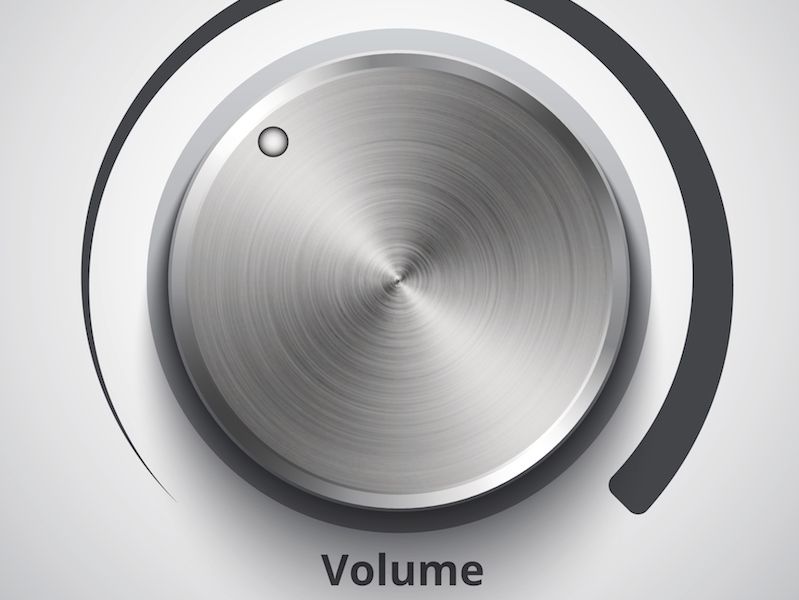
Have you ever gone to the beach and seen one of those “Beware of Shark” warnings? It’s not hard to understand that you shouldn’t dismiss a caution like that. A warning like that (particularly if written in large, red letters) might even make you reconsider your swim altogether. But people usually don’t pay attention to warnings about their hearing in the same way for some reason.
Recent research has found that millions of individuals neglect warning signs regarding their hearing (there’s no doubt that this is a global problem, though this research was exclusively carried out in the UK). Part of the challenge is knowledge. Being afraid of sharks is fairly instinctive. But fear of loud noise? And how do you know how loud is too loud?
Loud And Dangerous Sound is All Around us
It isn’t just the machine shop floor or rock concert that are dangerous to your hearing (not to downplay the hearing hazards of these scenarios). There are potential hazards with many every-day sounds. That’s because the duration of sound is as harmful as the volume. Even lower-level sounds, including dense city traffic, can be dangerous to your hearing if you are exposed for more than two hours.
Read on to find out when sound gets too loud:
- 30 dB: Everyday conversation would be at this volume level. At this level, there won’t be a limit to how long you can confidently be exposed.
- 80 – 85 dB: This is the sound level of heavy traffic, a lawnmower, or an air conditioner. After about two hours this level of sound becomes damaging.
- 90 – 95 dB: A motorcycle is a practical example of this sound level. This amount of exposure gets dangerous in as little as 50 minutes of exposure.
- 100 dB: An oncoming subway train or a mid-sized sporting event are at this volume (of course, this depends on the city). This level of sound can become dangerous after 15 minutes of exposure.
- 110 dB: Have you ever cranked your Spotify music up to max volume? That’s usually around this volume on most smartphones. This level of exposure is dangerous after only 5 minutes of exposure.
- 120 dB and over: Immediate pain and injury can happen at or above this volume (think about an arena sized sporting event or rock concert).
How Loud is 85 Decibels?
Generally speaking, you’re in the danger zone when you’re dealing with any sound 85 dB or above. But it can be hard to recognize how loud 85 dB is and that’s the problem. It’s not tangible in the way that a shark is tangible.
And that’s one of the reasons why hearing warnings commonly go ignored, especially when the sound environment isn’t loud enough to cause pain. There are a couple of potential solutions to this:
- Suitable training and signage: This is true of the workplace, in particular. The real dangers of hearing loss can be reinforced by signage and training (and the benefits of hearing protection). Signage could also let you know just how loud your workspace is. Helping employees recognize when hearing protection is recommended or necessary with appropriate training can be very useful.
- Download an app: There isn’t an app that’s going to directly safeguard your ears. But there are several sound level metering apps. Injury to your hearing can happen without you recognizing it because it’s hard to know just how loud 85 dB feels. Using this app to monitor sound levels, then, is the solution. This can help you develop a sense for when you’re entering the “danger zone” (and you will also discern right away when things are getting too loud).
If You’re in Doubt, Protect Yourself
Signage and apps aren’t a foolproof solution. So if you’re in doubt, take the time to protect your hearing. Over a long enough period of time, noise damage will almost definitely create hearing issues. And it’s easier than it ever has been to injure your ears (it’s a simple matter of listening to your music too loudly).
If you’re listening to headphones all day, you should not turn up the volume past the half way. You require noise blocking headphones if you are always turning up the volume to block out background sound.
That’s why it’s more essential than ever to recognize when loud becomes too loud. And to do this, you need to raise your own awareness and knowledge level. It’s not difficult to reduce your exposure or at least use hearing protection. That starts with a little recognition of when you should do it.
That should be easier today, too. Particularly now that you understand what to look for.
Think you might have hearing loss? Schedule a test.